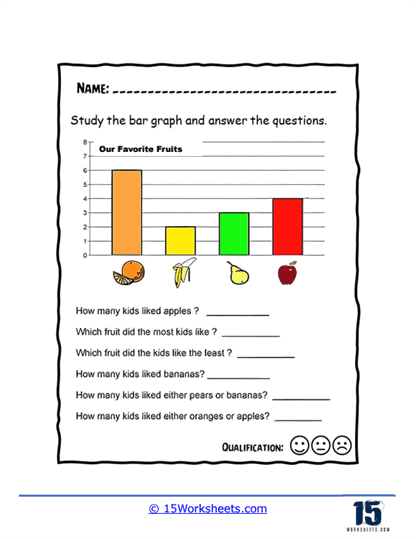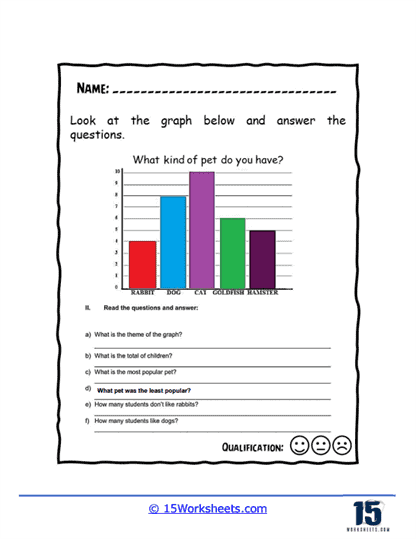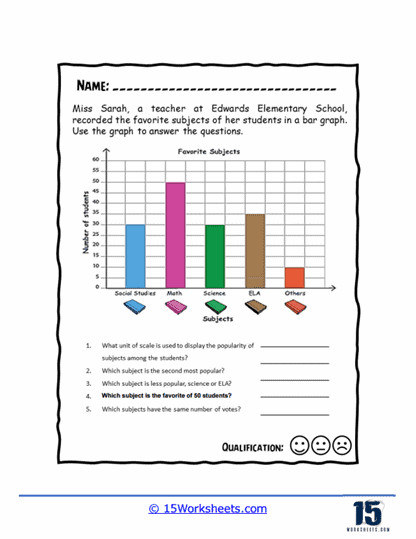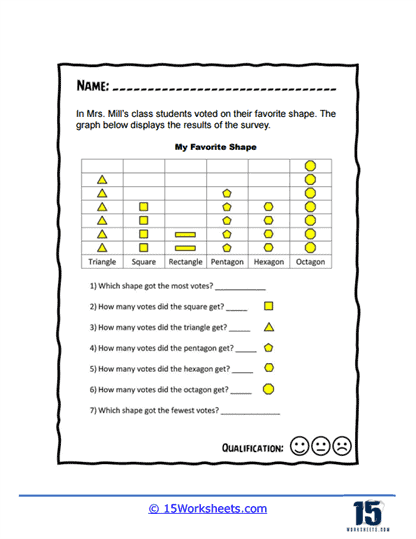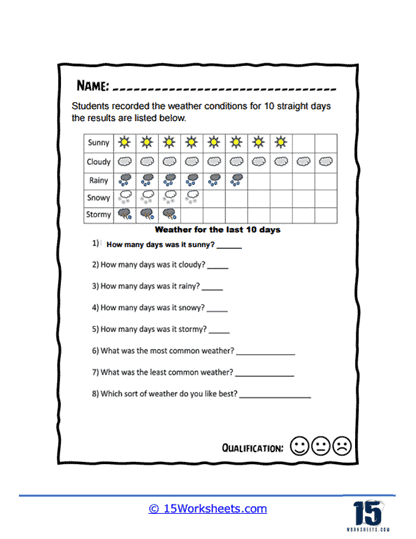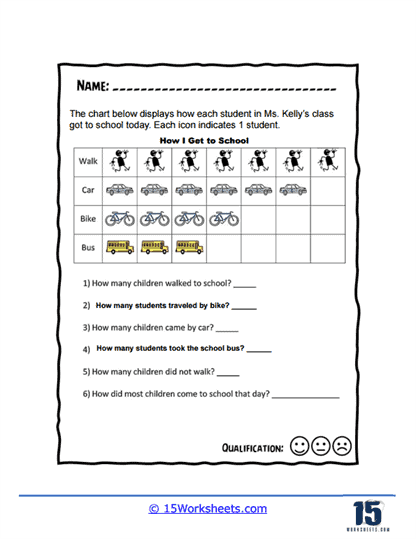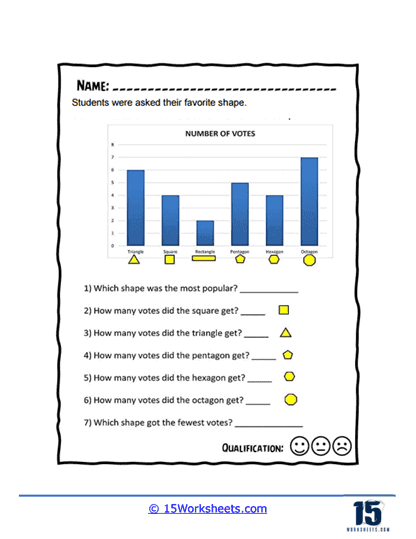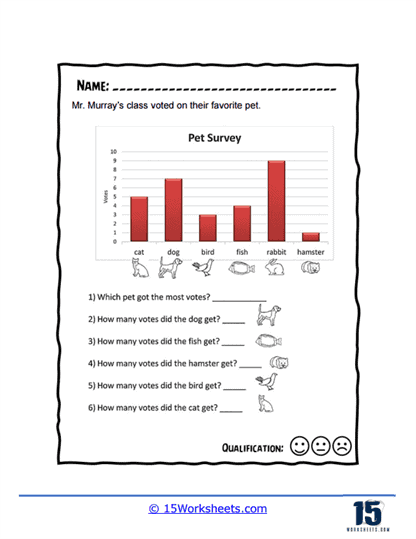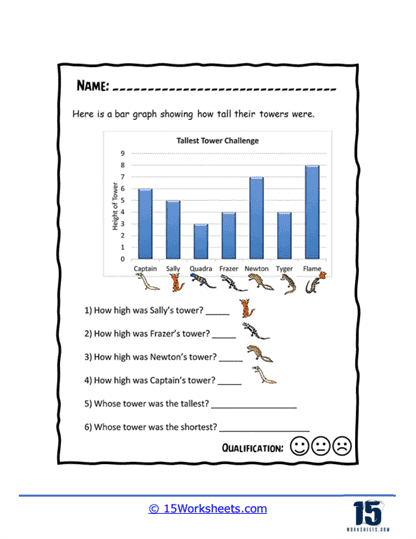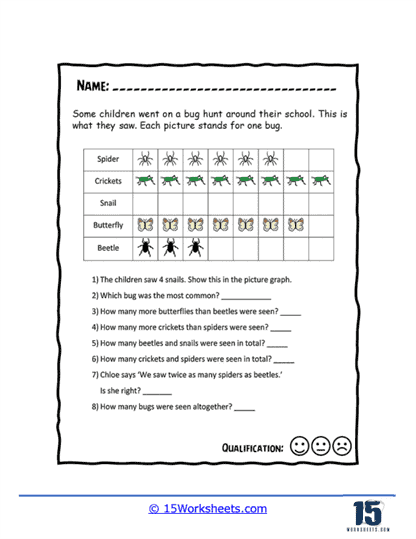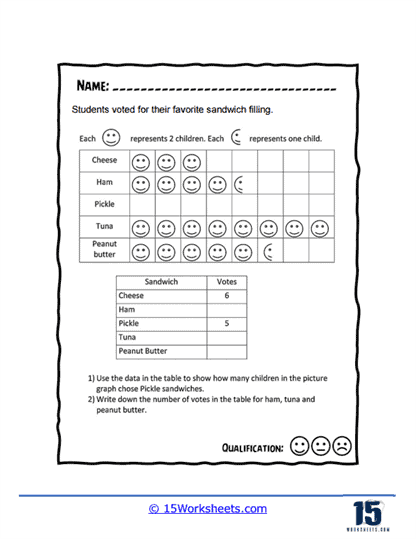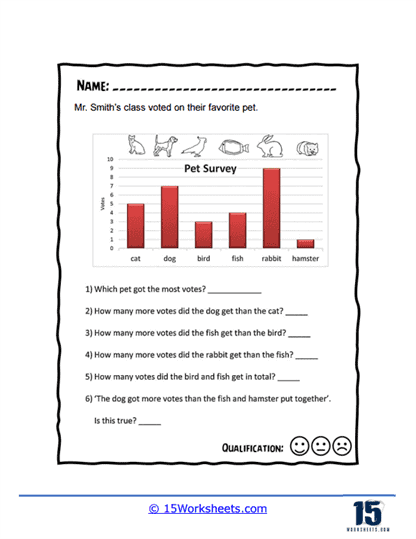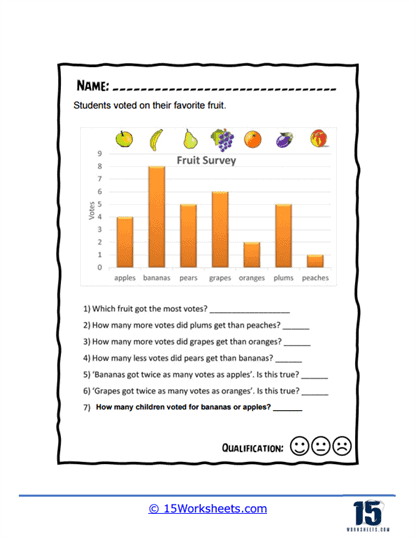Bar Graphs Worksheets
What are Bar Graphs?
A bar graph, also known as a bar chart or bar diagram, is a graphical representation used to display and compare data using rectangular bars. Each bar represents a category, and the height or length of the bar corresponds to the quantity or value of that category. Bar graphs are commonly used to show comparisons among discrete categories or groups.
There are two main types of bar graphs:
Vertical Bar Graph: In a vertical bar graph, the bars extend vertically from the horizontal axis (x-axis). The categories are displayed along the x-axis, and the values or quantities are represented on the vertical axis (y-axis).
Horizontal Bar Graph: In a horizontal bar graph, the bars extend horizontally from the vertical axis (y-axis). The categories are displayed along the y-axis, and the values or quantities are represented on the horizontal axis (x-axis).
Bar graphs are useful for presenting and comparing data in a visually clear and easy-to-understand manner. They can be used to display data across time, such as sales numbers over several months, or to compare values among different categories, such as the number of people in various age groups.
Here is an example:

This is a quick example of a vertical bar graph of survey of what pets that students have at home. At a quick glance we can tell that in particular survey rabbits are the most popular pet and hamsters the least.
About These 15 Worksheets
A bar graph, also known as a bar chart, is a visual representation of data using rectangular bars of different lengths.
These worksheets will introduce you to the concept of bar graphs. You will learn that bar graphs are used to display and compare data in different categories or groups. They will provide you with data sets or information, and your task will be to create a bar graph based on that data. You will learn how to label the horizontal (x-axis) and vertical (y-axis) axes, and how to determine the appropriate scale for each axis.
You will also learn the importance of providing a clear and descriptive title for your graph. The title helps the reader understand what the graph represents. You will learn how to label the categories or groups being compared on the x-axis. For example, if the bar graph is about favorite fruits, the categories might be “apples,” “bananas,” “oranges,” and so on.
These worksheets will show you how to represent the data using rectangular bars. The height or length of each bar corresponds to the quantity or value being measured for each category. Once you’ve created a bar graph, the worksheets will include questions that ask you to interpret and analyze the data. You will learn to read and extract information from the graph, identify the category with the highest or lowest value, compare values between different categories, and make observations or conclusions based on the data displayed.
These bar graph worksheets may also require you to draw conclusions or make predictions based on the information presented in the graph. For example, you might be asked to determine the most popular item based on the data, or to predict future trends based on the existing data. By working with these worksheets, you will become more familiar with bar graphs, improve your ability to read and analyze data visually, and enhance your critical thinking skills.
How Do Bar Graphs Help Us?
Bar graphs are valuable tools that help us in several ways:
Data Visualization
Bar graphs provide a visual representation of data, making it easier for us to understand and interpret information. Instead of sifting through numbers or tables, we can quickly grasp patterns, trends, and comparisons by looking at the bars of different heights. Bar graphs allow us to compare data across different categories or groups. By visually comparing the lengths of the bars, we can quickly identify which categories have higher or lower values. This comparison helps us understand relative differences and make informed decisions.
Trends and Patterns
Bar graphs enable us to identify trends and patterns in data. By analyzing the heights and positions of the bars, we can observe whether values are increasing, decreasing, or staying constant over time or across different variables. This helps us recognize patterns and make predictions. Bar graphs facilitate data analysis by presenting information in a concise and organized manner. We can identify outliers, anomalies, or significant variations between different categories. By examining the bars, we can make connections, draw conclusions, and gain insights from the data.
Communication and Decision-Making
Bar graphs are effective tools for presenting data to others. They provide a clear and visually appealing way to convey information. Whether in reports, presentations, or academic settings, bar graphs make it easier for others to understand the data and the message being communicated. Bar graphs assist in decision-making processes. They provide a visual summary of information, making it simpler to assess different options or scenarios. Bar graphs help us weigh alternatives, analyze data, and make more informed choices.
Track Progress and Performance
Bar graphs are often used to track progress and performance over time. By regularly updating a bar graph with new data points, we can monitor changes, track improvements, and measure success in various areas, such as academic performance, sales figures, or personal goals. Bar graphs simplify complex data sets by breaking them down into manageable and understandable visual representations. Instead of overwhelming us with raw data, they condense information into a clear and concise format, making it easier to comprehend and work with.

